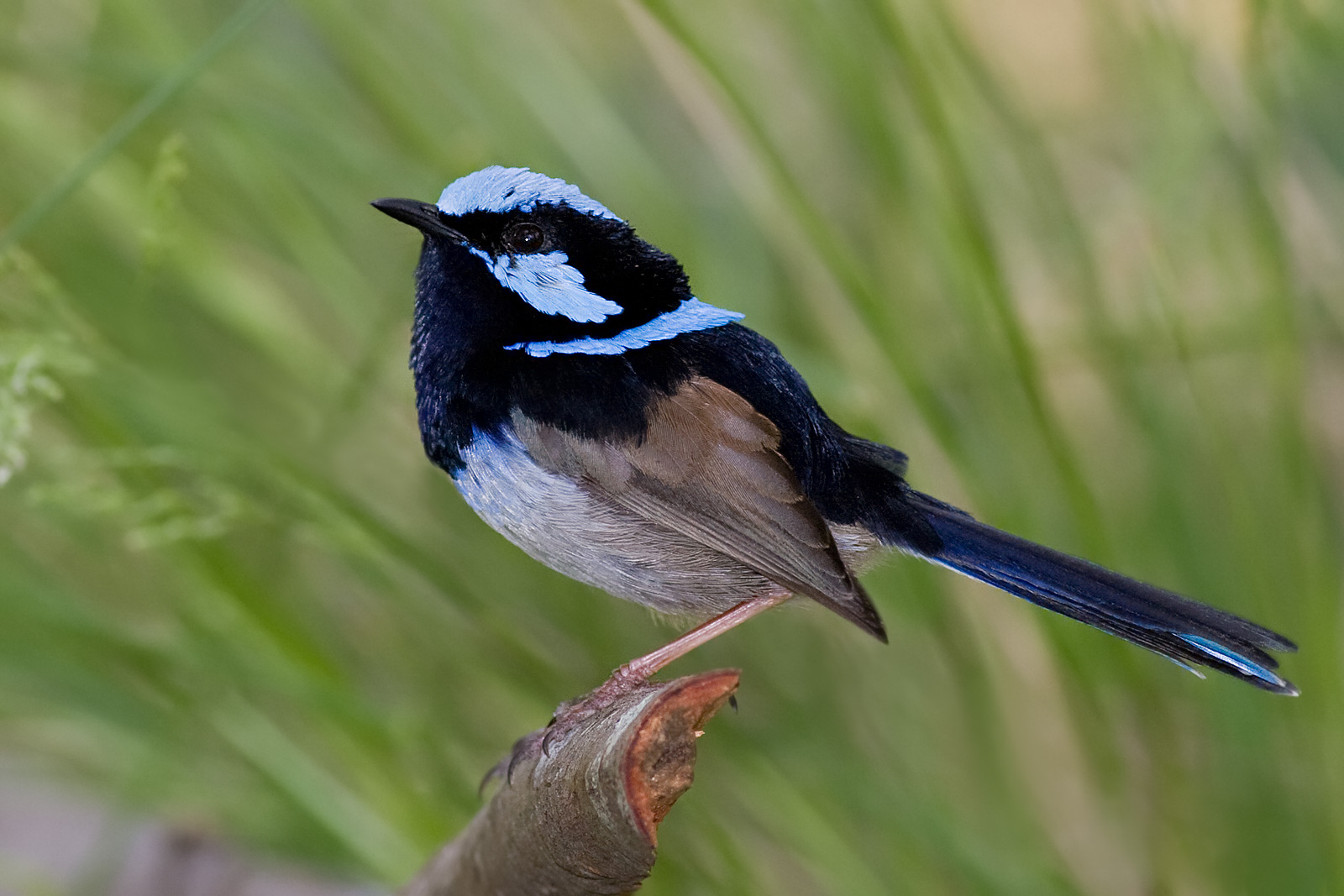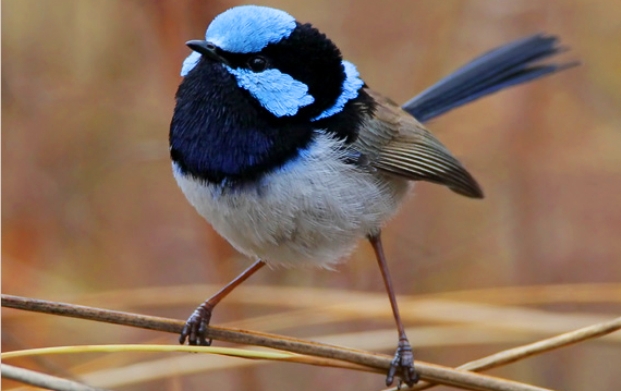
Malurus cyaneus
TAXONOMY
Malurus cyaneus Ellis, 1782, Adventure Bay, Tasmania. Six subspecies.
OTHER COMMON NAMES
English: Superb blue wren; French: Mйrion superbe; German:
Prachtstaffelschwanz; Spanish: Ratona Australiana Azul.
PHYSICAL CHARACTERISTICS
6.3 in (16 cm); female 0.28–0.35 oz (8–10 g), male 0.30–0.37
oz (8.5–10.5 g). Male in breeding plumage has brilliant
turquoise crown, cheeks, and mantle, deep blue breast; other
ages and sexes drab olive above, light gray below.
DISTRIBUTION
Restricted to southeastern Australia, usually to within 125 mi
(200 km) of coast. The six subspecies recognized are M. c. cyaneus,
M. c. samueli, M. c. elizabethae, M. c. cyanochlamys, M. c.
leggei, M. c. ashbyi; many restricted to single islands.
HABITAT
Moist sclerophyll woodlands and forest with dense understory;
also rainforest, swamps, coastal areas, river courses, and suburban
gardens and parks.
BEHAVIOR
A cooperative breeding species, usually found in family groups
of three to five birds, climbing through undergrowth and hopping
across open ground, tail cocked. They are weak fliers.
They maintain territories throughout the year. Calls consist of
musical trills by both sexes.
FEEDING ECOLOGY AND DIET
Mainly insectivorous, eating ants, flies, weevils, grasshoppers,
and insect larvae. Glean primarily ground, litter, and low foliage.
REPRODUCTIVE BIOLOGY
Socially monogamous and sexually promiscuous, with males
wandering into adjacent territories, often carrying yellow
flower petals to attract females; males may father less than half
of the offspring produced in their territory. Clutch is three to
four red-spotted, white eggs. Female incubates for two weeks;
fledging in 10–14 days.
CONSERVATION STATUS
Not threatened but much native habitat has been converted to
agriculture.
SIGNIFICANCE TO HUMANS
None known.
Other popular Animals
Photo Gallery of - Superb fairy-wren




 Animalia Life
Animalia Life